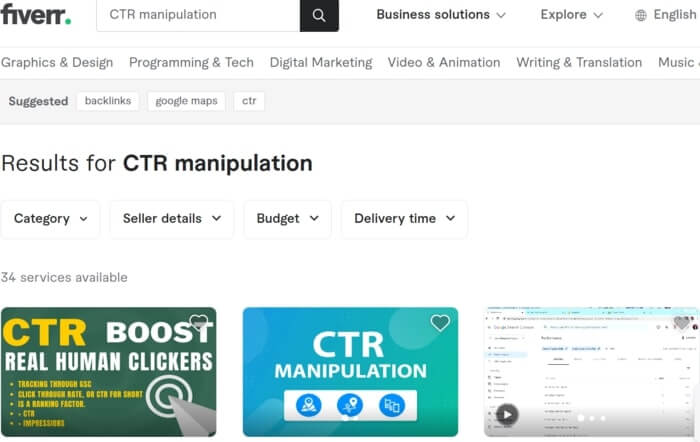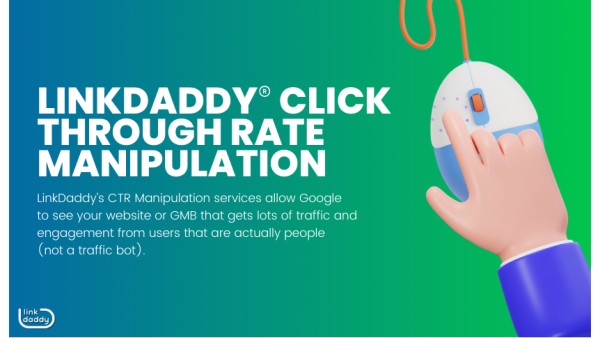Maximize Your Online Impact with LinkDaddy CTR Manipulation Solutions
Maximize Your Online Impact with LinkDaddy CTR Manipulation Solutions
Blog Article
Optimizing Organic Click-Through Fees With CTR Manipulation
The optimization of natural click-through prices (CTR) is a nuanced undertaking that pivots on comprehending both individual psychology and reliable web content discussion. The landscape is swarming with mistaken beliefs and oversimplifications regarding what genuinely drives CTR.
Recognizing Click-Through Fees
Comprehending click-through prices (CTR) is essential for evaluating the effectiveness of internet marketing techniques. CTR measures the percentage of customers that click a specific link or promotion contrasted to the overall number of customers that see it. A higher CTR shows that the material is engaging and pertinent to the target market, while a reduced CTR may signify a need for optimization.
To compute CTR, separate the number of clicks by the number of impressions and multiply by 100. If an advertisement gets 300 clicks out of 10,000 impressions, the CTR would certainly be 3%. This metric is essential for assessing numerous aspects of electronic advertising, including seo (SEO), e-mail projects, and social networks marketing.
Additionally, evaluating CTR aids marketing experts determine which approaches produce the ideal results and which call for refinement. By concentrating on boosting CTR, companies can boost their content's exposure and efficiency, leading to boosted traffic and prospective conversions. Recognizing the nuances of CTR is foundational for any type of marketer aiming to maximize their online presence and make best use of return on investment (ROI)

The Psychology of Individual Behavior
User behavior is dramatically affected by mental aspects that dictate how people connect with on-line web content. Comprehending these variables is crucial for maximizing click-through rates (CTR) in organic search results page. Cognitive prejudices, such as the anchoring result, play an essential function fit users' understandings. Their preliminary impressions can greatly influence their succeeding judgments about importance and trustworthiness. when users come across information.
Psychological reactions additionally considerably effect user habits. Web content that resonates mentally can cause a sense of necessity or inquisitiveness, triggering customers to click. Additionally, social proof-- such as individual testimonials or ratings-- can improve trust fund and encourage interaction, as individuals commonly want to the habits of others to educate their own choices.
In addition, the principle of deficiency can drive clicks - CTR Manipulation Service. Limited-time deals or unique content produce a fear of missing out (FOMO), engaging users to act rapidly. Recognizing these psychological chauffeurs allows marketers to create even more engaging web content that reverberates with their target market
Effective CTR Manipulation Methods
Leveraging mental insights can considerably enhance click-through rates (CTR) through targeted manipulation techniques. Among one of the most reliable approaches is using engaging headlines that evoke curiosity or urgency. Phrasing titles as inquiries or including numbers can bring in even more attention, prompting users to click.
Another strategy entails enhancing meta descriptions to create a feeling of importance and immediacy. By plainly detailing the solutions or advantages provided in the web content, you can engage prospective readers and persuade them to click. In addition, using power words-- such as "special," More hints "shown," or "free"-- can enhance the allure of your web content.
Aesthetic components additionally play a critical function. Including captivating images or thumbnails can attract individuals in and improve CTR. A/B screening different visuals can aid determine which photos reverberate best with your target market.
Lastly, ensuring that your material promises deliverable worth leads to greater CTR. They are a lot more likely to engage when customers view that clicking will certainly provide them with significant understandings or options. By employing these methods attentively, marketers can efficiently adjust CTR to their advantage while preserving moral standards.
Typical Misconceptions Regarding CTR
Several mistaken beliefs border click-through rates (CTR) that can lead marketing professionals to make illinformed choices. While a high CTR suggests that more individuals are clicking, it does not assure sales or conversions.
Another common belief is that CTR is an isolated metric. In truth, CTR ought to be reviewed in conjunction with various other performance indicators, such as bounce rate and conversion price, to get an alternative view of campaign success.
In addition, some marketing experts presume that enhancing for CTR alone is sufficient. However, concentrating solely on CTR can result in clickbait tactics that might draw in clicks but fall short to involve users meaningfully. This strategy can hurt this link brand name track record and lead to reduced retention prices
Lastly, there is an idea that CTR techniques are globally efficient. The truth is that ideal CTR tactics can vary significantly throughout industries and target market, necessitating customized approaches for various market segments. Comprehending these misconceptions is vital for developing efficient CTR strategies that line up with overarching marketing goals.
Gauging CTR Success
Although high click-through rates (CTR) can suggest effective engagement with material, determining their real success needs a thorough analysis of several variables. It is essential to comprehend the context in which the CTR is attained. A high CTR on a deceptive title might not convert to meaningful engagement or conversions, eventually showing improperly on the brand name's credibility.
Second, assessing the source of web traffic is vital. Organic website traffic from search engines can signify a robust material technique, while clicks from pointless resources might show an absence of targeting. In addition, measuring the subsequent individual habits is important; evaluating metrics such as bounce rate, time invested in page, and conversion rates can supply deeper insights right into the top quality of the involvement launched by the CTR.

Final Thought

The optimization of natural click-through prices (CTR) is a nuanced venture that pivots on recognizing both individual psychology and effective material presentation. CTR measures the portion next page of individuals that click on a particular link or ad contrasted to the overall number of customers who watch it. A higher CTR suggests that the web content is engaging and pertinent to the target audience, while a reduced CTR may signify a need for optimization.
Concentrating specifically on CTR can lead to clickbait strategies that might attract clicks however fall short to engage individuals meaningfully. In addition, measuring the subsequent customer actions is important; assessing metrics such as bounce rate, time spent on web page, and conversion prices can offer much deeper understandings right into the quality of the interaction launched by the CTR.
Report this page